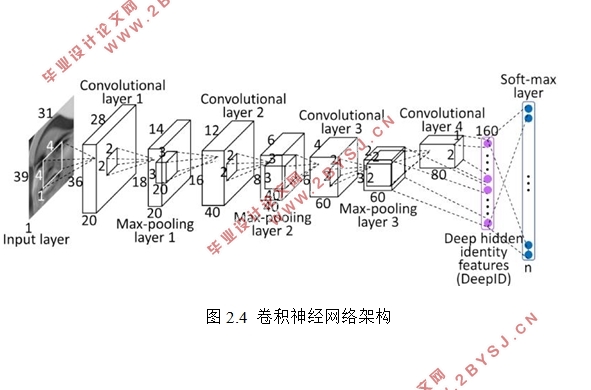基于深度卷积神经网络的多目标检测系统
无需注册登录,支付后按照提示操作即可获取该资料.
基于深度卷积神经网络的多目标检测系统(论文10000字,外文翻译)
摘要:由于当代计算机科学技术的飞速发展,人类的生活发生了巨大的进步,这使得人类的生活越来越智能化。近年来,人类对于人工智能的探索从未停止过。众所周知,人类的视觉系统是我们感知和认识外部世界的重要成分。有研究表明,我们对世界的认识有近80%的信息是来源于视觉信息。因此,在探索人工智能的路途中,计算机视觉一直是个十分重要的研究领域。计算机视觉涉及到许多的学科,其中包括图像处理,深度学习以及模式识别等,其最终目的是使计算机能够模拟人类的视觉来认识并理解这个世界。计算机视觉的其中一个非常重要的子方向就是目标检测。由于卷积神经网络在深度学习中具有较强的特征表达能力,提取的特征具有较强的鲁棒性,本文主要采用了基于深度学习的检测框架——SSD,利用我们事先标定好的数据对模型进行训练,并对参数进行调节。最后,我们训练一个精度较高、速度较快的模型,并将其应用到设计的检测界面中。
关键词:计算机视觉;深度学习;目标检测;卷积神经网络
Multi-objective Detection System Based on Deep Convolutional Neural Network
Abstract:As the computer science rapidly develops, great progress hastaken place inhuman life, which has made human life more and more intelligent. In recent years, human exploration of artificial intelligence technology has never stopped. As is known to all, the human vision system is an important component of our perception and understanding of the external world. Studies have shown that nearly 80% of our knowledge of the world is derived fromvisual information. Therefore, computer vision has always been a very important research field in the exploration of artificial intelligence. Computer vision involves many disciplines, including image processing, deep learning and pattern recognition. Its ultimate goal is to enable computers to simulate human vision to learn and understand the world. One of the very important sub-directions of computer vision is object detection. Because the convolutional neural network has strong featureexpression capability in deep learning,and the extracted features have strong robustness, this paper mainly adoptsa deep learning detection framework—SSD, usingour previously calibrated data to train the model, and adjust the parameters.Finally, we train a highprecision, fast model and apply it to the designed detection interface.
Key words:computer vision;deep learning;object detection;convolutionalneural network

目录
引言 1
1 绪论 1
1.1 目标检测的背景和意义 1
1.2 目标检测的发展和研究现状 2
1.3 目标检测的方法 3
1.4 目标检测的应用 3
2 深度学习 4
2.1 神经网络模型 4
2.2 BP神经网络 4
2.3 卷积神经网络 8
3 SSD目标检测 9
3.1 SSD模型描述 9
3.2 SSD的训练 10
4 系统设计 12
4.1 数据标注及预处理 12
4.2 模型训练与预测 13
4.3 应用界面设计 14
5 总结与展望 16
致谢 18
